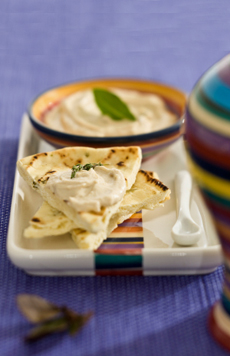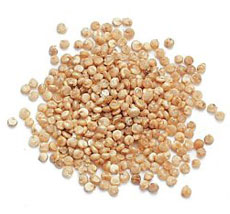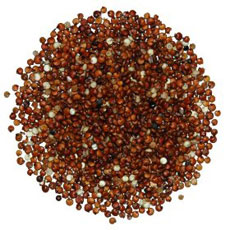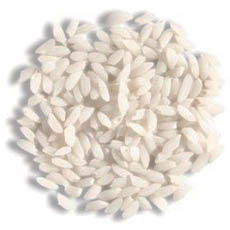

Serve bean dip with pita, instead of hummus. Here’s a recipe. Photo by by Maria Bacarella | IST.
June 2005
Last Updated November 2024
|
 |
Beans & Grains Glossary
Page 6: Terms With Q ~ R
Here are terms including quinoa plus navy, pinto, and red beans. If you’d like to suggest additional words, use the Contact Us link on this page. See many other informative food glossaries.
Click on a letter to go to the appropriate glossary page:
a b c d e f g h i j k l m n o p q r s t u v w x y z
This material is copyrighted and cannot be reproduced in whole or in part
without written permission.
QUINOA
|
Quinoa (Chenopodium quinoa), pronounced KEEN-wa or KEE-noo-ah, is the Quechua (Inca) word for “mother grain” or “super grain.” A broad-leafed, annual herb, quinoa grows wild in the Andes Mountains of South America; it was first cultivated more than 5,000 years ago by the Incas and was, along with corn and potatoes, the foundation of the Andean diet. When mature, this tall, handsome plant is topped with large plume-like seed heads that range in color from vivid red, orange, or yellow to black or white.
Quinoa contains more protein—a very high-quality protein—than any other grain. It is equivalent to milk as a protein source. Since quinoa also contains all eight essential amino acids (and is particularly rich in lysine), it’s considered a complete protein. It also delivers calcium, fiber, iron, magnesium, vitamins A, B and E, and zinc. Both the spinach-like leaves and the tiny seeds are highly nutritious. Before consuming, quinoa seeds must be processed to remove their bitter coating of saponin. After washing or dry polishing, the ready-to-cook seeds are white, red, or beige. The leaves, which unfortunately seldom reach the consumer, may be eaten raw in salads or cooked like spinach.
|
|

Quinoa and red quinoa (below) are available at Amazon.com.

|
Cooked quinoa is delicious and extremely versatile; it may be used in the place of almost any other grain, including rice, to make everything from appetizers to desserts (make quinoa pudding instead of rice pudding). It has a slight nutty flavor (red quinoa is the nuttiest), which makes it a good substitute for couscous or bulgur. It has a unique texture as well. When cooked, the thin germ circlet falls from the seed and remains crunchy while the pearly grain melts in the mouth.
RED BEAN or SMALL RED BEAN
This reddish-brown bean can easily be mistaken for the adzuki bean, except that it has a white eye instead of a white stripe. They are commonly used for Mexican refried beans.
RED CORN
Red corn (also known as red maize) is a variety of corn characterized by its striking kernels that range from red to burgundy. The color comes from natural plant antioxidant pigments called anthocyanins, which are the same compounds that give red cabbage and blueberries. It contains similar base nutrients to other corn varieties but is higher in antioxidants compared to yellow corn due to the anthocyanins. Some red corn varieties have higher protein content as well.
|
|

Ears of red corn (photo © Burpee). |
RICE
The staple grain of two-thirds of the world’s population, rice is a grass that originated in southeast Asia and Africa. Domesticated rice comes from two species in the Poaceae (“true grass”) family, Oryza sativa and Oryza glaberrima. O. sativa appears to have been domesticated from wild Asian rice around the foothills of the Himalayas, yielding the short-grained “japonica” or “sinica” varieties (Japanese rice), the long-grained “indica” varieties (basmati rice) and the broad-grained “javonica” varieties. O. glaberrima comprises the native African rices, which are being replaced in Africa by the introduction of the preferred Asian species. See our complete Rice Glossary for more than 45 rice terms. |
|

Basmati rice is available from Amazon.com. |
Continue To The Next Page: Terms With S ~ Z
Go To The Article Index Above

|








